This easy bulgogi recipe makes all your Korean BBQ dreams come true with its simple, sweet, and spicy flavor. Serve it over a bowl of steamed rice for dinner tonight!
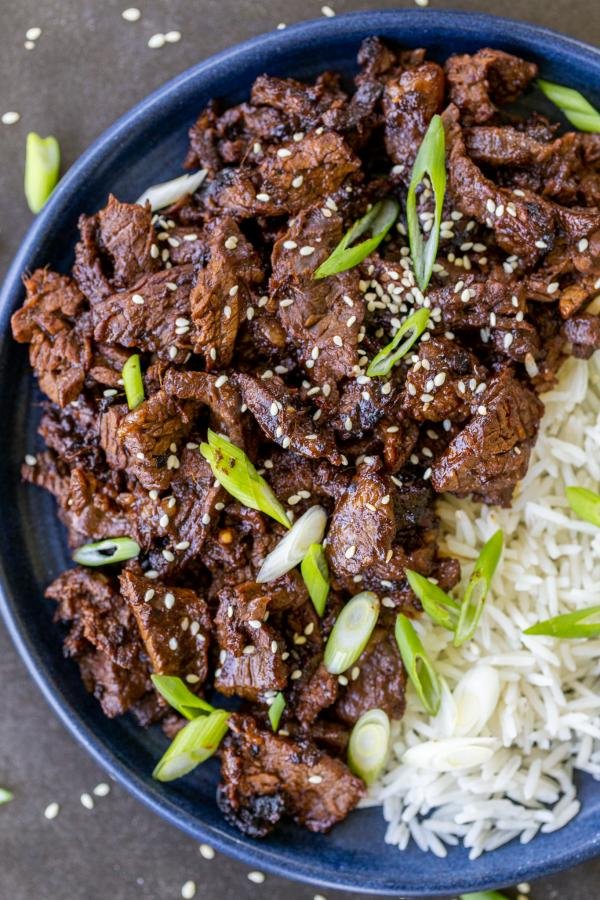
My family is currently on a protein kick, which means I have to get creative with different cuisines and flavors so dinner doesn’t get boring! When we lived in Seattle, we had access to so much great Korean food, but here in Nashville, Korean restaurants are really lacking!
Bulgogi is one of my favorite Korean BBQ dishes. There’s nothing quite like the smell of bulgogi searing on a cast-iron skillet. If you’re also obsessed with Korean BBQ and hot pot dinners (but hate shelling out the big bucks to eat it at a restaurant), I highly suggest you try this bulgogi beef recipe at home! It’s so easy!
Where can you find gochujang? This Korean red pepper paste is vital to this beef bulgogi recipe. It is sold in most specialty Asian stores and has even found its way into big box grocery stores lately. If you can’t get your hands on it in store, snag some off Amazon.
What is Bulgogi?
Bulgogi is a type of grilled Korean dish made up of thinly sliced, marinated beef that is usually grilled or stir-fried. Bulgogi and its “sister” kalbi/galbi (marinated short ribs) have become super popular in recent years and for good reason – they’re so, so, so good! Here’s a breakdown of what to expect in this dish.
- Flavor: Bulgogi is the perfect trifecta of fruity sweetness, earthy spicy peppers, and savory beef.
- Texture: The marinated, tender beef is draped in a silky, peppery sauce.
- Time: From prep to table, this simple bulgogi recipe takes 30 minutes of prep and cook time. However, the beef does need to marinate for at least two hours (you can pump this up to overnight if you’d like).
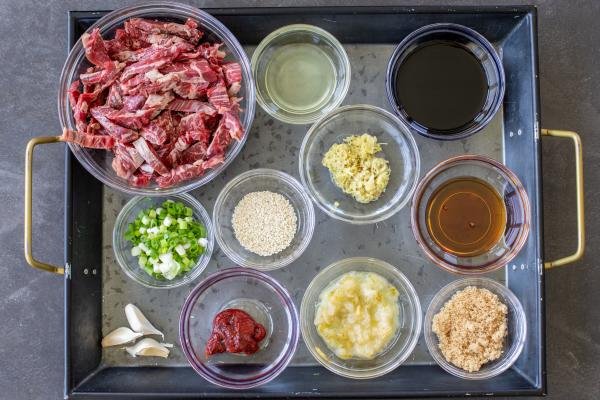
What Cut of Beef Do I Use?
Bulgogi can be made with several different cuts of beef. Here are some of my favorites.
- Ribeye: If you’re willing to splurge a little, ribeye is my first choice cut for its nice marbling and ultra-tender texture. Make sure to trim off any excess fat before cooking!
- Flank: Flank is the next best option and is a bit more affordable than ribeye. It’s pretty lean and prone to drying out, so make sure to slice it thin and avoid overcooking. It’s best to marinate it overnight for maximum tenderness.
- Sirloin: Top sirloin is the most affordable of the three, and also the leanest. Again, slice it thin, marinate overnight for the most tender bite, and avoid overcooking.
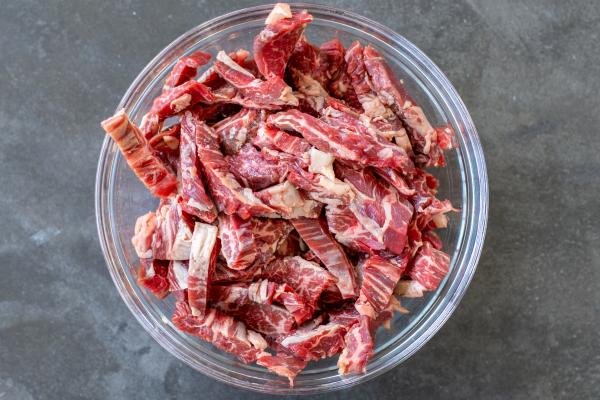
How to Make Korean Beef Bulgogi
Making this easy Korean bulgogi recipe requires a small bit of prep and marinating. Here’s an overview.
- Slice the beef: Thinly slice the beef against the grain. Place the sliced beef in a resealable plastic storage bag.
- Make the beef bulgogi sauce/marinade: Whisk the soy sauce, brown sugar, sesame oil, garlic, pear, fresh ginger, and gochujang together in a large bowl.
- Marinate the beef: Pour the marinade over the beef and massage it in. Pop the bag in the fridge for at least two hours.
- Cook the beef: In a cast iron grill pan, cook the beef over high heat in single layer batches. Top with sesame seeds and minced green onion or scallions. Dig in and enjoy!
Serving tip: Serve bulgogi over a bowl of steamed white rice or brown rice. For a traditional meal, pick up a jar of kimchi (Korean fermented cabbage) or other fermented vegetable sides (seaweed salad, pickled cucumber, or pickled radish).
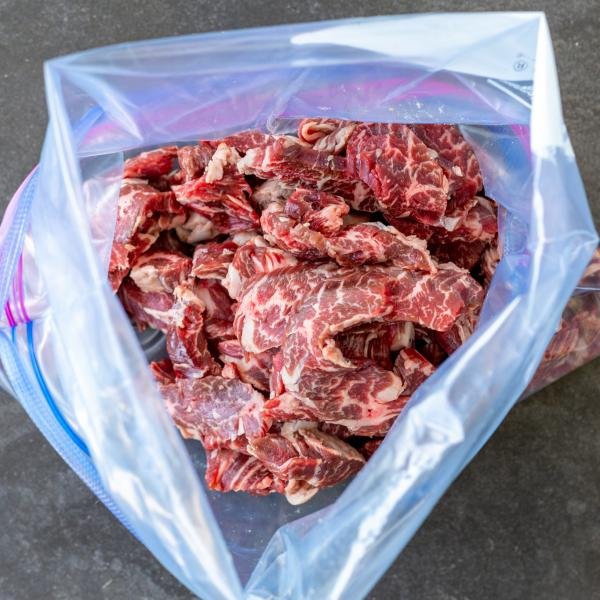
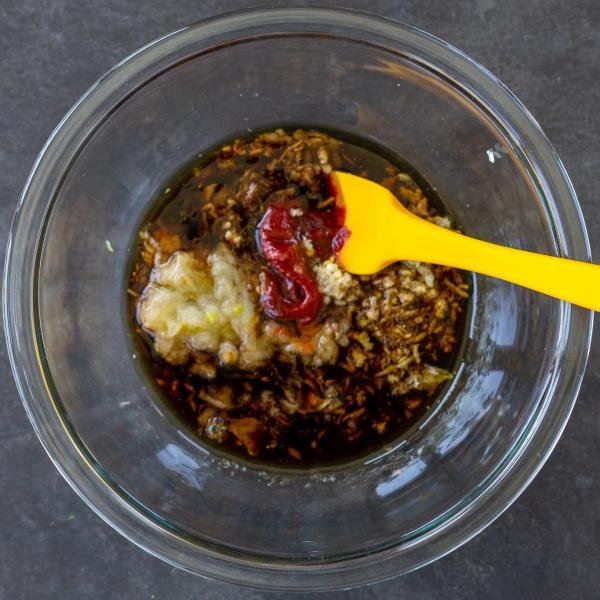
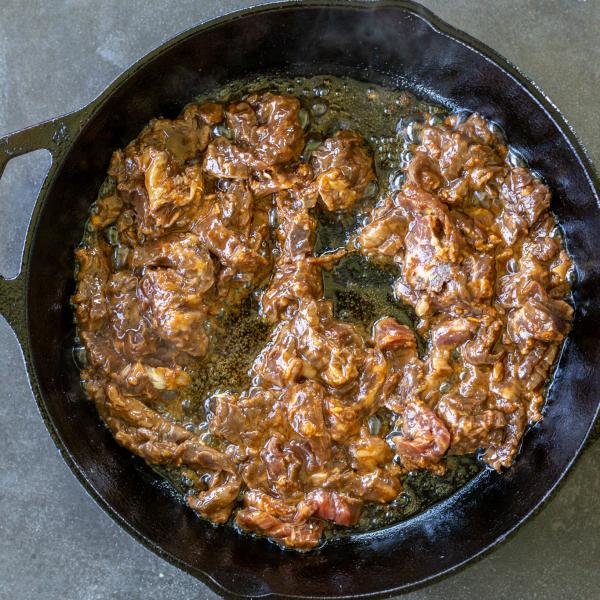

Pro Tips for this Easy Bulgogi Recipe
Check these tips out for easy beef bulgogi that taste just as good as your favorite Korean restaurant.
- Pop the beef in the freezer before slicing: Place the beef in the freezer for about 20 minutes before attempting to slice it. This makes it so much easier to get the signature thin slices. Use a mandolin to slice it quickly and easily!
- Cook the beef in small batches: Avoid overcrowding the bulgogi in the skillet by cooking small batches at a time. This helps get a nice, even crust.
- Allow the beef to marinate overnight (if possible): Two hours of marinating does the trick, but an overnight marinade definitely yields the best depth of flavor. If you have the time, marinate overnight!
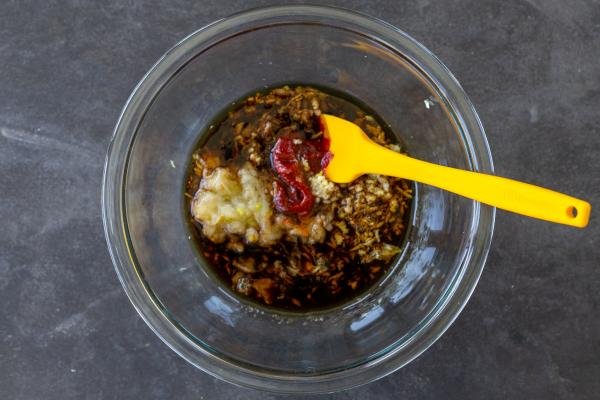
Storing, Freezing & Reheating Bulgogi
Whether you have leftovers to stow away or would like to batch cook and freeze bulgogi, find all the best storing practices below.
- Refrigerator: To store bulgogi for 2-3 days, keep it in an airtight container in the fridge.
- Freezer: Allow the bulgogi to fully cool, then place it into a freezer safe container to freeze. To thaw, place in the fridge overnight.
- Reheating: The best way to reheat bulgogi is back in a skillet with a little sesame oil or in the microwave until warmed through.
More Asian-Inspired Recipes
- Air Fryer Korean Pork Ribs – Sweet and salty short ribs
- PF Chang’s Chicken Lettuce Wraps (Crazy Easy) – Savory ground chicken low-carb wraps
- Spicy Chili Noodles – Quick noodles tossed in a sweet spicy sauce
- Grilled Chicken Teriyaki – Traditional Asian teriyaki
- Simple Yakisoba Noodles Recipe – Japanese-style stir fry noodles
- Mongolian Beef – Soy saucy, pan-fried beef
Recipe
Ingredients
- 2 lbs beef ribeye boneless
- 1/4 cup green onions sliced
- 1 tbsp sesame seeds
- 2 tbsp oil canola, olive, or vegetable
Bulgogi Sauce/Marinade
- 1/3 cup low-sodium soy sauce
- 2 tbsp brown sugar
- 3 tbsp sesame oil
- 3 garlic cloves pressed
- 1/2 pear grated
- 2 tbsp fresh ginger grated
- 1 tbsp gochujang (Korean red pepper paste)
Instructions
Beef
- Slice the beef against the grain into thin slices (about 1/4-inch thick).
- Place the beef into a large resealable plastic storage bag. Set aside.
Bulgogi Sauce
- In a medium bowl, whisk the soy sauce, brown sugar, sesame oil, pressed garlic, grated pear, grated ginger, and gochujang together.
- Pour the sauce into the beef bag and massage the marinade into the beef from the outside. Allow it to marinate in the fridge for at least 2 hours.
- Preheat a cast-iron over high heat. Cook the beef in single layer batches.
- Garnish with a sprinkle of sesame seeds and chopped green onions. Enjoy!
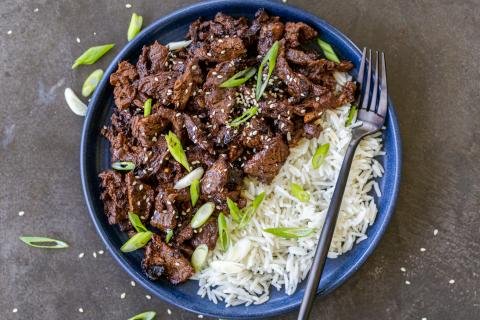

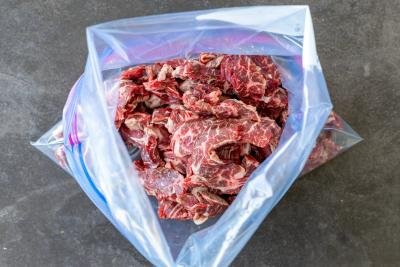
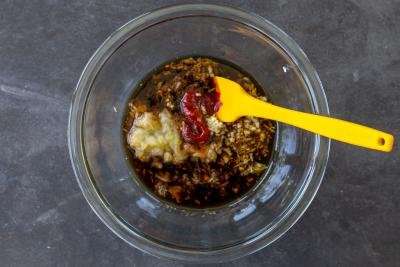
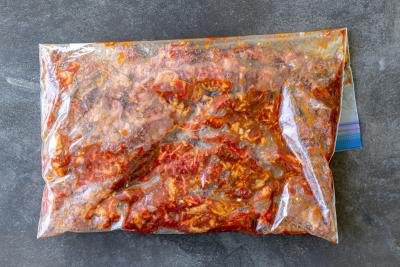
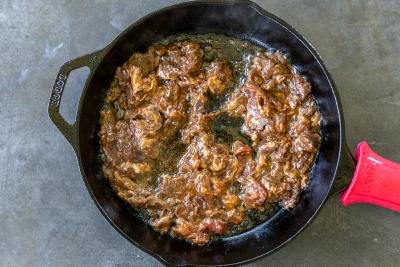
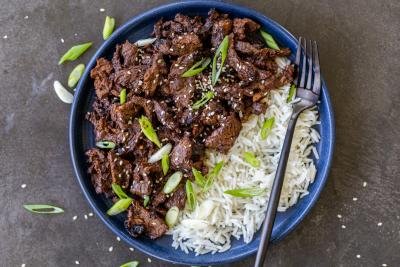
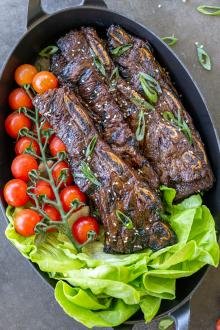
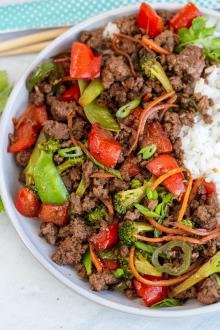
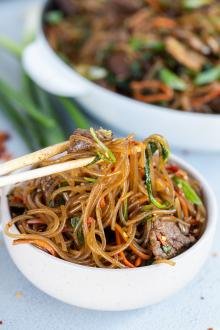



I’m a huge fan of Bulgogi. I lived in Korea for a year and fell in love with their food. Thank you for this delicious recipe.
That's awesome! I bet living in Korea gave you such a great appreciation for the flavors. I'm so glad you enjoyed the Bulgogi recipe—it’s such a delicious dish, and it’s great to hear it brought back some memories for you!
Made this lastnight and it was absolutely amazing!!! The smell of this cooking is just out of this world! Love it and will be making this regular now 🤤🤤🤤 I was 8ml short on soy sauce but it was still really good. Thanks for this recipe 👍🏻
Hi Lauren, I'm happy to hear it was a success!